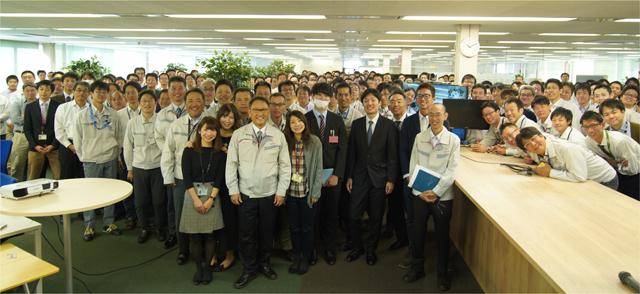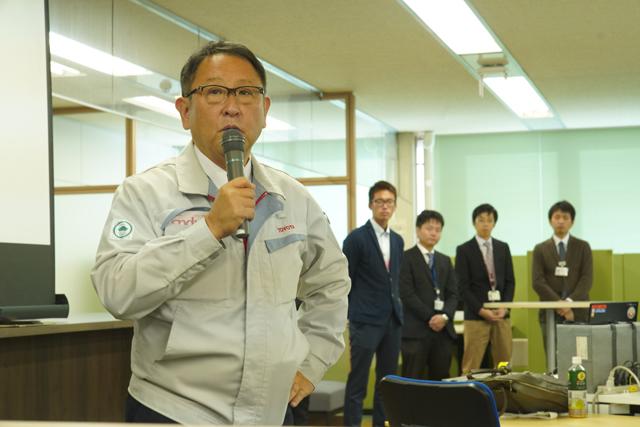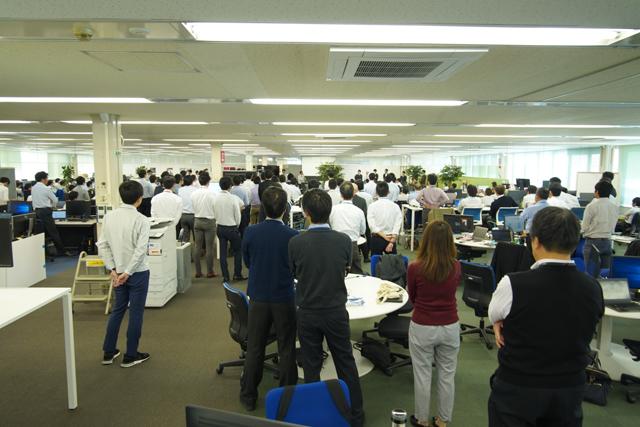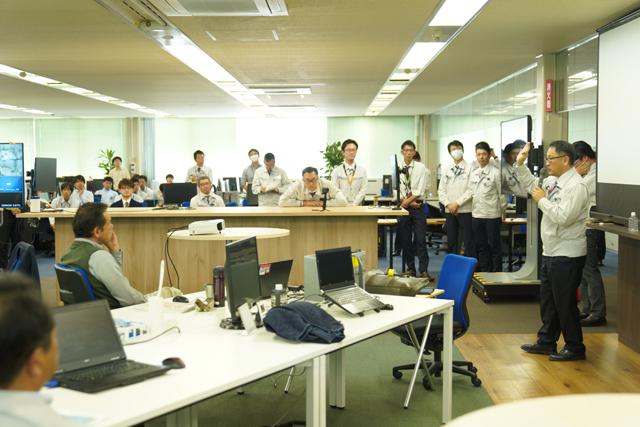
Akio makes a visit to a special unit called the "ZEV B&D Lab," which examines both BEV product development and business implications of ZEVs -- but not all members are from Toyota.

In prior articles, Toyota Times covered Akio’s visits to the and the Tahara Plants (Japanese language only) in the summer of 2019. He has subsequently made time for further internal site visits. This time, he visited a special unit called the “ZEV B&D Lab”.

The ZEV B&D Lab may sound like just a jumble of English letters, but “ZEV” stands for “Zero Emission Vehicle”, namely BEV and FCEV, “B&D” for “Business & Development”, and “Lab” for “Laboratory.”
The primary role of this division is to examine both BEV product development as well as the business implications of utilizing such vehicles.
One key aspect where it differs from other divisions is in the composition of the members: not all of them are from Toyota. In fact, about half of the total 342 team members (158) have come to the division by assignment from companies outside of Toyota.
Upon arrival at the ZEV B&D Lab, Akio started things off by sharing some of his thoughts on this unique team composition:

This division is a bit special. What is different about it?
It is comprised of a variety of people from different companies: some from Toyota, some from Subaru, and some from Suzuki.
Each of you have different experiences and expertise that you have developed from being in different sections.
Moreover, I have just heard that this workplace is growing monthly. People are gathering here not just from Toyota, but from various companies.
Looking at you now, I have no idea who is from Toyota, who is from Subaru, and who is from Suzuki.
I think this is wonderful. Why?
Because it’s a place where people set aside differences and are working to keep the spirit of monozukuri (making things) alive, something that has implications in the real world, and helps each of us to not lag behind the rest of the global automotive industry.
While it’s important to talk about particular underlying technologies and the functions of particular parts of BEVs, you that are here work to make sure that a consistent backbone runs through all these elements.
Lots of things are changing, and I’m sure this presents challenges.
But, this is also what makes your work exciting.
Of course, we still don’t know the future of BEVs.
But despite the unknown, there is no doubt that electrification [of vehicles] is progressing and we are heading towards greater automation, in short, towards Connected, Autonomous, Shared, and Electrified (CASE) technologies.
Amid these changes, no one knows what the future holds for the ZEV B&D Lab, but I hope that each of you will work consciously to ensure that the experiences you have, the networks you develop, and the friends you make in the course of your work here become positive forces for your future careers and lives.
Having been brought together through a common thread, I want you to focus on cherishing every moment of the experience and valuing the here and now. Of course, I want your time here to be valuable for your respective companies and the divisions from which you have been assigned; but, foremost, I want it to have value for you as individuals.
As Akio pointed out, the lab is growing rapidly each month. To understand who is who and how to work together, the team members gather every month to introduce the new members.
The timing of Akio’s impromptu visit on this occasion happened to coincide with this monthly introduction meeting.
Unlike other such monthly meetings, this time the room was silent after Akio finished speaking – perhaps it was because they were not used to having visits from someone like him at these meetings.

Those present could have heard a pin drop due to the silence; however, Akio continued:
Since I’m here, do you have any complaints, concerns, or thoughts you’d like to share with me? It’s a rare chance to speak “live” with me in person, so please feel free to ask anything you’d like.
From there, the meeting turned into a Q&A session with Akio.
Mr. Toyoshima, a general manager and the one acting as the meeting moderator, encouraged questions from everyone, saying, with contagious chuckling:
Ask anything you’d like by raising your hands. Don’t be shy.
Don’t hesitate to ask management whatever you are thinking. We’ll pick up the pieces afterwards.
At these words from Mr. Toyoshima, Akio immediately interjected, asking if they would really be able to pick up the pieces, after which he spoke again.
Mr. Toyoshima says he’ll pick up the pieces, but I don’t think he can…
The only person really responsible is me.
The point is that responsibility must lie with someone that the world recognizes as being accountable. You can say, “I’m responsible” within your various internal corporate hierarchies, but the world doesn’t recognize that.
That’s why taking on new challenges can happen if I demonstrate accountability for the results. For example, by saying I will resign.
Earlier, I talked about making ever-better cars and energizing the industry, but if we can achieve that we can do anything…
Not everything we do with such intentions will produce good results. That’s why somebody has to be accountable.
That’s why I think we will make rapid progress if you (including the general managers) adopt this type of “can-do” attitude towards your work.

Though the words were strict, the atmosphere was lighthearted enough that everyone was enlivened as Akio joked with Mr. Toyoshima, and even more so with the president’s assurance that he would take responsibility. This was the assurance they needed to feel confident that the lab could do whatever is needed in order to make ever-better cars.
After that comment from Akio, hands unceasingly raised to ask questions. The resulting Q&A session carried on for more than one hour.
The details of that Q&A session can be found here on Toyota Times, with the link provided below (Part 2).

